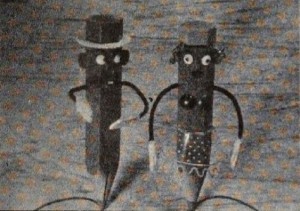
"Muntre Streker, which (we are informed) means "Funny Lines" in a literal translation from the Norwegian, is a wholly delightful tid-bit of animated cartooning. In it, fat colored crayons — one dressed as a boy, the other as a girl — act out a simple story which is as gay in its good humor as the animation is flawless in its technique. Scarcely 100 feet in length, Muntre Streker is a bright and sparkling gem of film fantasy." Movie Makers, Dec. 1952, 339.
"My Sierra Hideway: Leon Paddock, using a Bolex H-16 camera and a variety of four lenses, has produced a fine pictorial account of the beauties of the High Sierra mountains in California. The sound, on magnetic tape, enhances the film's presentation which gets off to a fine start with excellent titles." American Cinematographer, May. 1951, 192.
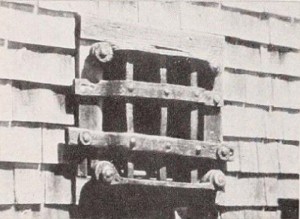
"In filming Nantucket, A Chapter from Early America, Russell T. Pansie chose a happy subject for Kodachrome — the weatherbeaten grays and pastel colors of the ancient buildings of Nantucket. Most color films are made with an effort to present colors as brilliantly as possible, but this picture is a delightful exception, and it is a notable example of the versatility of color film in the hands of a competent cameraman. In Nantucket, A Chapter from Early America, we see the orderly streets of the island, the historic buildings that date from the early Eighteenth Century, the mansions built by the prosperous sea captains of the Nineteenth Century and we glimpse the island's natural charm. But, in the brief footage that he wisely allowed himself, the cameraman has achieved more than an architectural study; he has reproduced the atmosphere of life as it was lived in the past." Movie Makers, Dec. 1943, 474.
"Narraburra is a slick piece of drama telling of the misfortune encountered by a prospector in the wilds of Australia who is thrown from his horse and breaks his leg. While his friends go for aid, a colony of meat ants find him and he knows that in a short while they will eat his flesh until he dies. How he keeps the ants from achieving their objective provides good cinema fare" PSA Journal, Sept. 1966, 35.
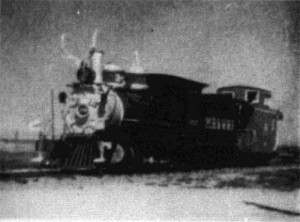
"In Narrow Gauge Kingdom Roger H. Klatt presents an ambitious and highly successful documentary study of the rapidly vanishing narrow gauge railroads of the Far West—and of Colorado in particular. Excellently photographed and edited, Narrow Gauge Kingdom gives rewarding evidence of high-caliber research carried out by a genuine railroad enthusiast. Both picture-wise and in well-delivered narrative, Mr. Klatt has delved deep into the flavor of his subject, producing a film which, despite is length, is interesting throughout and of lasting historical significance. A newcomer to the Ten Best competitions Mr. Klatt has used the medium of the motion picture with rare competence. Not only has he effectively pinned down the dramatic possibilities inherent in his subject, but he has utilized the mountain background of Colorado to fine advantage. Apparently neutral between the proponents of magnetic stripe or tape recording, Mr. Klatt has used both, skillfully putting the narration and railroading sound effects on magnetic stripe and and effectively indigenous guitar accompaniment on a separate tape!" PSA Journal, Jan. 1955, 48.
"Wayne Mitchell, a former Ranger in the National Park Service acquaints the audience with a few of the Ranger's many jobs. Filmed in the Sequoia National Park, with Mrs. Mitchell as co-producer, this excellent film includes a hair-raising fire sequence which was finally obtained only after the Mitchells had expended considerable time and energy chasing forest fire reports from San Diego to Sequoia. Invariably upon arrival, they would find it to be only a brush fire or in a spot inaccessible for filming. The film demonstrates their eventual successes." PSA Journal, Dec. 1955, 36.
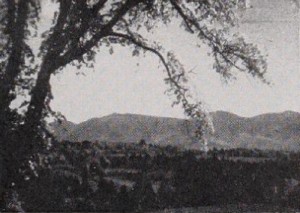
"Hamilton H. Jones has again shown his marvelous ability to combine beautiful movies and fine music on the double turntable into a cinematic whole that, in New England Autumn, carries an audience through the calm delight of fall days to a climax that has great dignity and spiritual stimulation. We see autumn in its most restful and wistful mood, and the action is slowly paced in harmony with the dying year. There is leisurely strolling in the many hued woods. The leaves on the ground are scuffed through and gently scattered. We see the things that we all like to do in the forests in autumn. Finally, in an arresting sequence of autumn fruits — great, gleaming pumpkins and ruddy apples — the music turns to the inspiriting old Dutch hymn of thanksgiving. Rising first orchestrally and then voiced by a thousand singers, the chorus ends as our eyes are lifted to the simple spire of a New England church. Here is suavity, here is intelligent movie making and here are dignity and spiritual uplift." Movie Makers, Dec. 1947, 534.
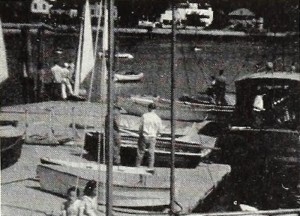
"Lester F. Shaal demonstrates, in New England Frames, what editing of existing footage can achieve. He has compiled from scenes of numerous sections of the Northeast a record of the year's seasons. Although the opening sequence of a train departing in a snowstorm seems to presage a more dramatic theme than that which follows, Mr. Shaal has captured the flavor of the New England countryside in all its seasonal beauty. Particularly competent in the winter sequence are the smooth follow shots of skiers. A little streamlining in the overall coverage would not have impaired the attractions of even this land of the early settlers." Movie Makers, Dec. 1950, 468.
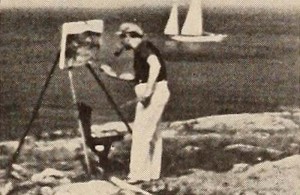
"New England Holiday is the kind of travel film any movie maker should be proud to produce. Replete with human interest and a warm feeling of good fun, this two reel record is distinguished by a wealth of splendid compositions and natural camera treatment. Albert F. Watts has lavished on such typically New England subjects as Gloucester harbor, the fishing fleet or a clam bake the sensitive feeling of an artist for line and mass and the alert understanding of cinematics of a genuine movie maker. Smoothly integrated sequences have been edited with unerring suavity and liveliness, comprising a whole which is both vital and lovely to look at. The production is fundamentally weakened only by a selection of title wordings considerably less spirited and effective than the films which they accompany." Movie Makers, Dec. 1938, 620.
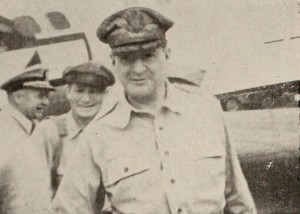
"When Lewis B. Sebring. jr., went from the United States early in 1942. as a war correspondent accredited to General Douglas MacArthur's headquarters, he wisely left his camera at home. There was no telling what dangers and difficulties lay ahead. Months later, after the Japanese had been driven back across the Owen Stanley Mountains, after the battles of Buna, Salamaua and others, there seemed to be more time and opportunity for personal movie making. Happily, Mr. Sebring managed to borrow a good 16mm. camera, and New Guinea Newsreel is one of the exciting results. Keyed by the expert titles of a news writer, it presents a series of well rounded sequences on such colorful subjects as a visit by General MacArthur; a cine interview with Major Richard I. Bong, top American air ace of the war to date; an informal exhibition of Japanese souvenirs, and a moving Easter service, somber against the gray dawn of a New Guinea foreshore." Movie Makers, Dec. 1944, 496.
Total Pages: 37